What is an angle grinder?

An angle grinder, also known as a disc grinder or a side grinder, is a versatile hand tool used for cutting, grinding, and polishing a wide variety of materials. It consists of a motor that drives a spinning abrasive disc or wheel, which can be changed depending on the task at hand.
Angle grinders are commonly used in construction, metalworking, and woodworking, as well as for home improvement projects. They are able to cut through materials such as metal, tile, concrete, and stone, making them invaluable for tasks such as cutting rebar, removing rust, or shaping and smoothing surfaces.
The compact and portable design of angle grinders allows for easy maneuverability and access to tight spaces. They feature a rotating head that can be adjusted to different angles, allowing for precise cuts and grinding. Safety is important when using an angle grinder, as the high speeds and sharp blades can be hazardous. It is important to wear protective gear, such as safety glasses and gloves, and to use the tool with caution.
Definition and Function
An angle grinder, also known as a disc grinder or side grinder, is a handheld power tool used for grinding, cutting, and polishing. It features a geared head with a mounted abrasive disc or a cutting disc. The tool is commonly used in construction, metalworking, and woodworking applications.
The primary function of an angle grinder is to remove material from a workpiece by grinding or cutting. It can be used for various tasks such as smoothing rough edges, removing rust or paint, shaping and cutting metal or stone, and even concrete cutting. The tool’s versatility is due to the different types of discs that can be attached, allowing it to perform different applications.
Angle grinders are typically powered by electricity, compressed air, or petrol engines. Electric angle grinders are the most common and are suitable for most household and professional tasks. They are easy to handle, lightweight, and require less maintenance.
Main Components
The main components of an angle grinder include:
- Motor: Provides the power to rotate the disc.
- Gears: Transmit the power from the motor to the disc.
- Disc Guard: Protects the user from sparks and flying debris.
- Spindle: Holds the disc in place and allows for easy disc changes.
- Handle: Provides a grip for the user to hold and control the tool.
- On/Off Switch: Controls the power supply to the motor.
It is important to wear appropriate safety gear, such as safety glasses and gloves, when using an angle grinder. The tool should be used with caution and proper technique to avoid accidents and injuries.
Parts and Components
An angle grinder consists of several parts and components that work together to provide the desired functionality and cutting power. Understanding the various parts can help users operate the tool safely and effectively.
1. Motor
The motor is the heart of an angle grinder and is responsible for generating the power needed to rotate the grinding wheel or cutting disk. It is usually an electric motor that converts electrical energy into mechanical energy, allowing the tool to perform its functions.
2. Grinding Wheel/Cutting Disc
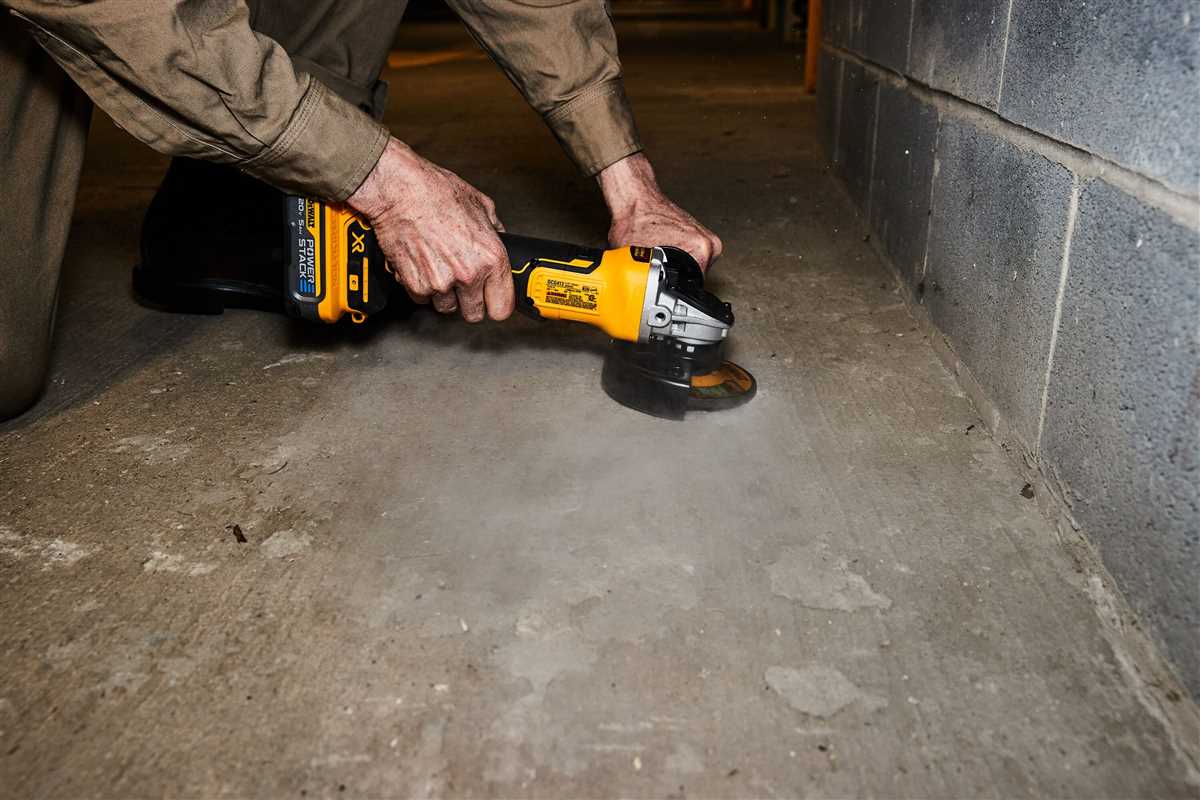
The grinding wheel or cutting disc is the part of the angle grinder that comes into direct contact with the material being worked on. It is made of abrasive materials and is available in various sizes and types depending on the task at hand. The grinding wheel is used for grinding, while the cutting disc is used for cutting through different materials.
3. Guard
The guard is a safety feature that surrounds the grinding wheel or cutting disc. It helps to protect the user from any debris or sparks that may be generated during the operation. The guard also helps to prevent accidental contact with the rotating wheel, reducing the risk of injury.
4. Handle
The handle is the part of the angle grinder that the user holds onto while operating the tool. It provides stability and control, allowing the user to guide the tool accurately. The handle is usually made of a non-slip material to ensure a secure grip.
5. On/Off Switch
The on/off switch controls the power supply to the angle grinder. It allows the user to easily turn the tool on or off as needed. The switch is usually located on the handle for convenient access.
6. Spindle Lock
The spindle lock is a mechanism that allows the user to secure the grinding wheel or cutting disc in place. It prevents the wheel from rotating while changing or adjusting its position. The spindle lock is activated by pressing a button or lever, making it easier to loosen or tighten the wheel.
7. Adjustable Guard
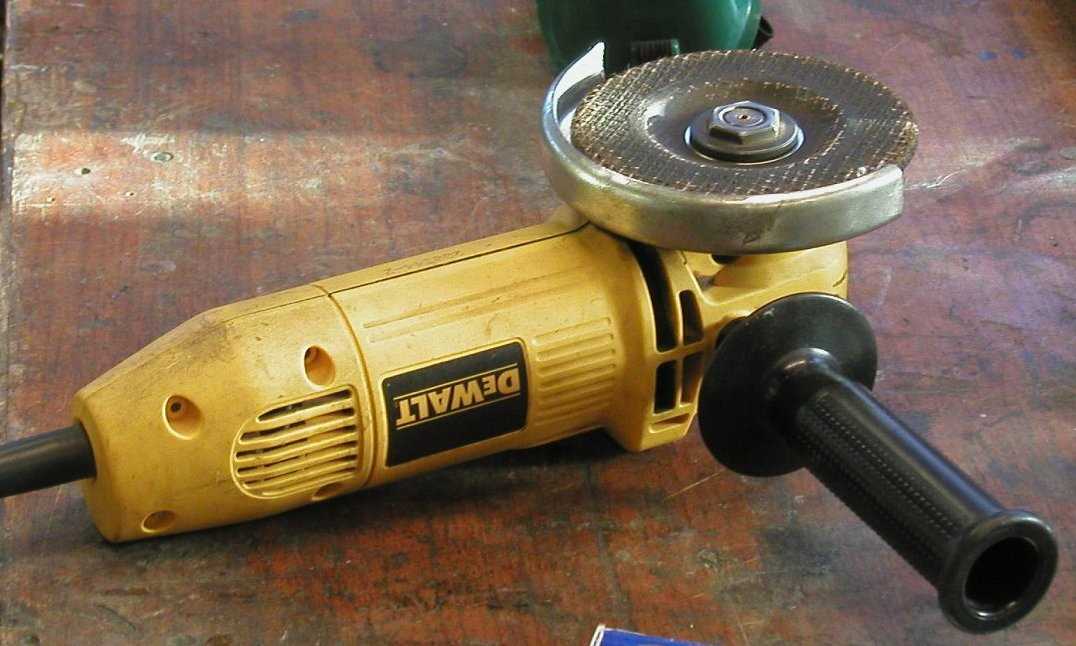
Some angle grinders feature an adjustable guard that allows the user to adjust the position of the guard based on the specific task or material being worked on. This feature provides flexibility and ensures maximum safety and efficiency.
Overall, understanding the different parts and components of an angle grinder is essential for safe and effective use. Familiarizing oneself with these elements allows users to properly maintain and operate the tool, ensuring optimal performance and longevity.
Types of Angle Grinders
1. Corded Angle Grinders: Corded angle grinders are the most common type of angle grinders and are powered by electricity. They are usually more powerful than cordless angle grinders and are suitable for heavy-duty tasks. Corded angle grinders require a power outlet to operate and are generally more affordable than cordless models.
2. Cordless Angle Grinders: Cordless angle grinders are powered by rechargeable batteries, offering the advantage of portability and freedom of movement. They are ideal for tasks that require mobility, such as outdoor or remote work locations. Cordless angle grinders are generally less powerful than corded models and might require more frequent recharging.
3. Pneumatic Angle Grinders: Pneumatic angle grinders, also known as air-powered angle grinders, are powered by compressed air. They are commonly used in industrial settings and are favored for their high power output. Pneumatic angle grinders are lightweight and offer excellent maneuverability, but they require an air compressor to operate.
4. Variable Speed Angle Grinders: Variable speed angle grinders allow the user to adjust the rotational speed of the grinding disc. This feature is particularly useful when working with different materials, as it allows for more precise and controlled grinding. Variable speed angle grinders are available in both corded and cordless versions.
Important Factors to Consider:
- Power: Consider the power output needed for your tasks and choose an angle grinder accordingly. Heavy-duty tasks may require higher power.
- Disc Size: The disc size determines the depth of cut and the materials that can be worked on. Ensure the chosen angle grinder can accommodate the required disc size.
- Safety Features: Look for angle grinders with safety features like adjustable guards, anti-vibration handles, and safety switches.
- Accessories: Consider the availability and compatibility of accessories such as grinding discs, cutting discs, and wire brushes.
- Budget: Set a budget and choose an angle grinder that fits within your price range, while still meeting your requirements.
By considering these factors and understanding the different types of angle grinders available, you can make an informed decision when selecting the right tool for your specific needs.
Applications and Uses
1. Metalworking
An angle grinder is commonly used in metalworking applications due to its versatility and power. It can be used to cut, grind, and shape metal materials such as steel, iron, and aluminum. Whether it’s trimming, deburring, or removing rust and paint, an angle grinder is an essential tool for metalworkers.
2. Masonry and Concrete
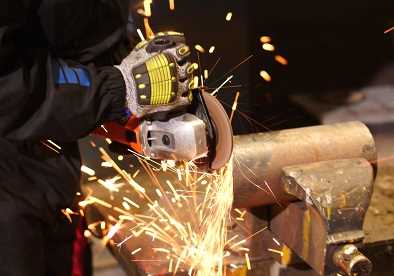
Another common application of an angle grinder is in masonry and concrete work. With the right attachments, it can be used for tasks such as cutting through tiles, bricks, and pavers, as well as shaping and grinding concrete surfaces. Whether you’re a professional contractor or a DIY enthusiast, an angle grinder can help you achieve precise and smooth results in masonry and concrete projects.
3. Woodworking
Although primarily used for metal and masonry work, angle grinders can also be used in woodworking applications. With the appropriate attachments and discs, they can be used for tasks such as shaping and carving wood, cutting through boards, and removing old paint or varnish. However, caution should be exercised when using an angle grinder on wood, as it can easily damage the material if not handled properly.
4. Automotive and DIY Projects
An angle grinder is a valuable tool in automotive maintenance and repair. It can be used for tasks such as cutting through metal parts, grinding welds, and removing rust or paint from vehicles. Additionally, angle grinders are popular among DIY enthusiasts for various projects around the house, such as cutting metal pipes, removing mortar, or sharpening tools.
5. Cleaning and Polishing
In addition to its cutting and grinding capabilities, an angle grinder can also be used for cleaning and polishing purposes. With the right accessories, it can be used to remove rust, scale, or other unwanted material from metal surfaces. Furthermore, it can be used to buff and polish metal, giving it a smooth and shiny finish. Whether you need to clean, remove rust, or polish metal, an angle grinder can come in handy for such tasks.
6. Other Uses
Aside from the above mentioned applications, angle grinders have various other uses. They can be used for tasks such as sharpening blades and tools, cutting through plastic or fiberglass, and even for cutting tiles in home renovation projects. The versatility and power of an angle grinder make it a valuable tool in numerous industries and for a wide range of tasks.
Safety Precautions
1. Wear Proper Protective Gear
When operating an angle grinder, it is essential to wear the appropriate protective gear to minimize the risk of injury. This includes safety glasses or goggles to protect your eyes from flying debris, a face shield to shield your face from sparks and debris, and hearing protection to guard against loud noise.
2. Check the Grinder’s Condition
Before using an angle grinder, inspect the tool carefully to ensure that it is in good working condition. Check the grinder’s power cord for any signs of damage or fraying and ensure that the grinder’s guards are intact and securely attached. Do not use a grinder that has any defects or is not functioning properly.
3. Secure Your Workpiece
Always firmly secure your workpiece before using an angle grinder. Use clamps or a vice to hold the material in place to prevent it from moving or slipping during operation. This will help to maintain control over the grinder and minimize the risk of accidents or injuries.
4. Position Yourself Correctly
When using an angle grinder, position yourself in a stable and comfortable stance. Stand firmly on both feet, with one foot slightly in front of the other for balance. Hold the grinder with a firm grip, keeping both hands on the tool at all times. This will help you maintain control and reduce the risk of losing control of the grinder.
5. Use the Right Grinding Disc
Always use the appropriate grinding disc for the task at hand. Different discs are designed for different materials and applications. Using the wrong disc can result in the disc shattering or the grinder kicking back, which can be extremely dangerous. Consult the grinder’s manual or a professional to ensure you are using the correct disc.
6. Follow Proper Operating Procedures
Follow the proper operating procedures for the specific angle grinder you are using. This includes starting the grinder at a low speed and gradually increasing the speed as needed, maintaining a steady grip on the tool, and avoiding excessive pressure or force when grinding. Always keep the grinder moving in a smooth motion to prevent overheating and damage to the material.
7. Disconnect Power Source
After using an angle grinder, always disconnect the power source before performing any maintenance or changing the grinding disc. This will prevent accidental starts and help to ensure your safety. Additionally, store the grinder in a safe and secure location to prevent unauthorized use or access.
8. Follow Safety Standards
Lastly, always adhere to the safety standards and guidelines set by your local regulatory authorities. These standards are in place to protect you and others from harm, and it is essential to follow them when using an angle grinder. Stay informed about any updates or changes to these safety standards to ensure you are using the tool safely and responsibly.
Choosing the Right Angle Grinder
When it comes to choosing the right angle grinder, there are a few key factors to consider. The first is the size of the grinder. Angle grinders come in a range of sizes, typically ranging from 4 to 9 inches. The size you choose will depend on the type of work you will be doing. For smaller tasks, such as cutting or grinding metal, a smaller grinder will suffice. For larger jobs, such as cutting through thick materials, a larger grinder will provide more power and efficiency.
Another important factor to consider is the power source of the angle grinder. There are two main types of angle grinders: corded and cordless. Corded grinders are powered by electricity and require a nearby power outlet. They tend to be more powerful and provide a consistent source of power. Cordless grinders, on the other hand, are powered by rechargeable batteries and offer more mobility. They are ideal for jobs where access to a power source may be limited.
Additionally, you should consider the speed and power rating of the angle grinder. The speed rating is typically measured in revolutions per minute (RPM). Higher RPMs mean the grinder will be able to remove material faster. The power rating, usually measured in watts, indicates the overall power of the grinder. Higher wattage will provide more cutting and grinding power.
When choosing an angle grinder, it is also important to consider the type of disc or wheel that the grinder can accommodate. Different tasks require different types of discs, such as cutting discs, grinding discs, or sanding discs. Make sure the grinder you choose can accommodate the specific type of disc you will be using.
It is also worth considering the additional features and accessories that may come with the angle grinder. Some grinders have adjustable handles or guards for added comfort and safety. Others may come with a carrying case or a variety of discs for different applications. Take these factors into account when making your decision to ensure you choose the right angle grinder for your needs.
In conclusion, choosing the right angle grinder involves considering factors such as size, power source, speed and power rating, disc compatibility, and additional features and accessories. By carefully assessing your specific needs and requirements, you can select the most suitable angle grinder to tackle your projects effectively and efficiently.
Maintenance and Care
Cleaning and Inspection
Regular and thorough cleaning of your angle grinder is essential to maintain its performance and longevity. After each use, make sure to remove any dust, debris, or residue from the tool. Use a brush or compressed air to clean out the air vents, motor, and other hard-to-reach areas.
Inspect the grinder for any signs of damage, such as cracked or worn-out parts. Pay special attention to the power cord, switch, and safety guard. Replace any damaged or faulty components before using the grinder again.
Lubrication
Proper lubrication is crucial for the smooth operation of your angle grinder. Check the manufacturer’s instructions for the recommended lubricant and apply it to the specified parts as needed. This will help reduce friction and extend the life of the tool.
Pay attention to the ball bearings, gears, and other moving parts of the grinder. Apply a small amount of lubricant to these areas, ensuring that it does not come into contact with the grinding disc.
Storage
When not in use, store your angle grinder in a clean and dry environment. Keep it in a secure place where it won’t be knocked over or bumped. Consider using a protective case or bag to prevent dust and debris from accumulating on the tool.
If storing the grinder for an extended period, it’s advisable to fully disassemble it, clean all parts, and apply a light coat of rust inhibitor. This will help prevent corrosion and ensure that the grinder is ready for use when needed.
Safety Measures
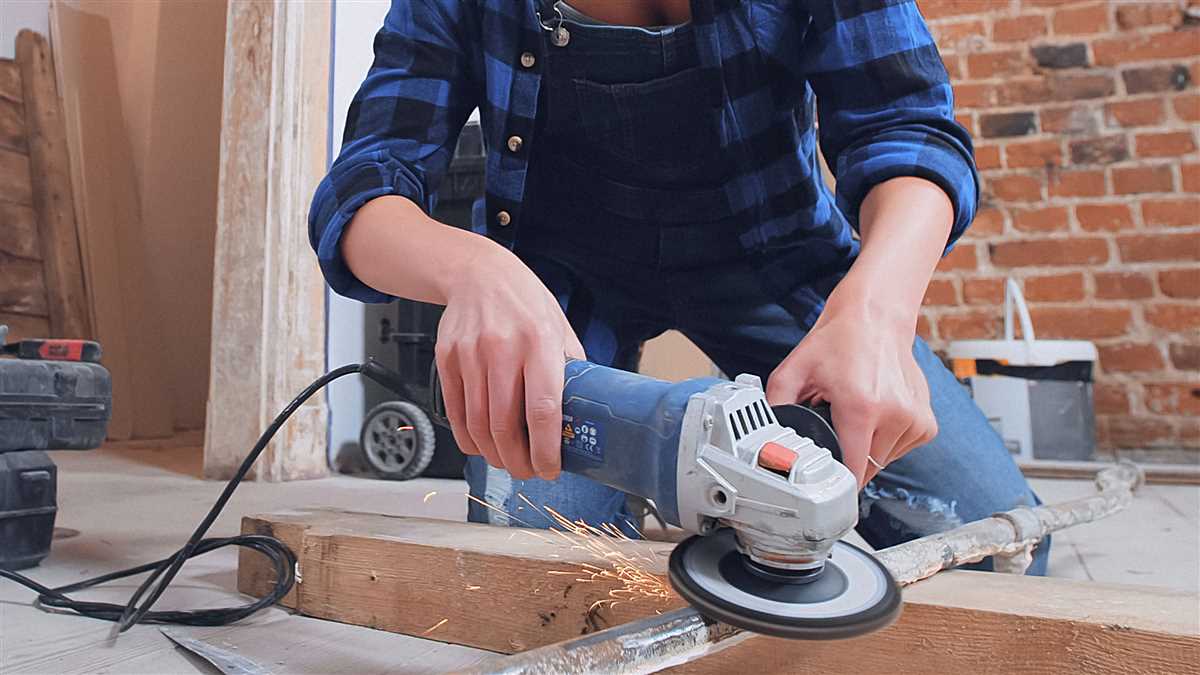
Never neglect safety when using an angle grinder. Always wear appropriate protective gear, such as safety glasses, gloves, and a face shield. Follow the manufacturer’s instructions for safe operation and never exceed the recommended speed or force.
Regularly inspect the safety guard and ensure it is properly installed and functioning correctly. Avoid modifying or removing any safety features of the grinder, as they are essential for preventing accidents and injuries.
Lastly, regularly educate yourself on best practices for using an angle grinder and stay updated with any new safety guidelines or recommendations from the manufacturer.
Popular Brands and Models
When it comes to angle grinders, there are several popular brands and models that are widely recognized for their quality and performance. These brands have established a strong reputation in the industry and are trusted by professionals and DIY enthusiasts alike.
Bosch
Bosch is a well-known brand that offers a wide range of angle grinders suitable for various applications. Their grinders are known for their durability, power, and precision. One of their popular models is the Bosch GWS 7-100, which features a powerful motor, ergonomic design, and adjustable guard for enhanced safety.
DeWalt
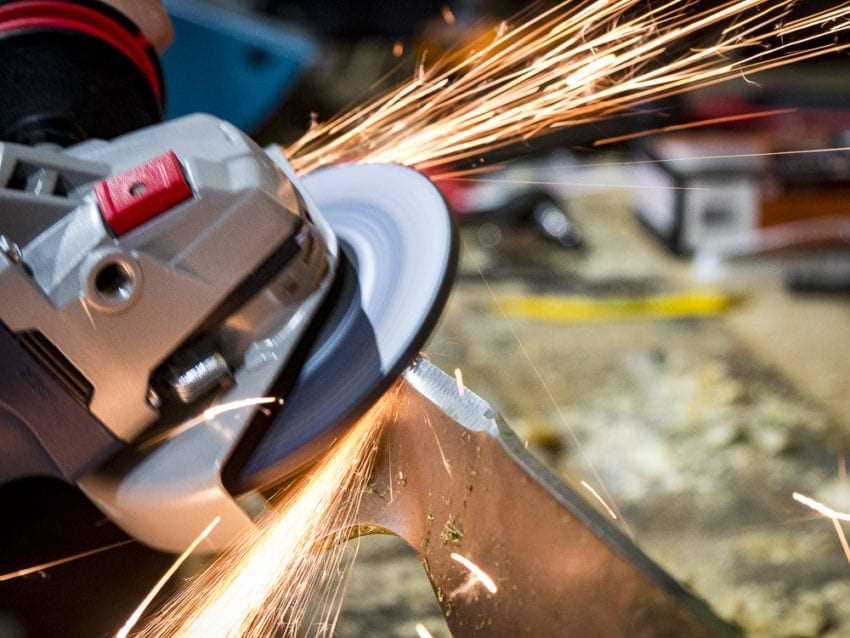
DeWalt is another reputable brand that manufactures high-quality angle grinders. They offer a diverse range of models to cater to different needs and preferences. One of their popular models is the DeWalt DWE402, which is known for its durability, performance, and user-friendly features such as a dust ejection system and anti-vibration handle.
Makita
Makita is a brand renowned for its reliable and efficient power tools, including angle grinders. Their grinders are favored by many professionals due to their excellent performance and durability. The Makita GA4530 is one of their popular models, offering a compact and lightweight design, powerful motor, and labyrinth construction to prevent dust and debris.
Milwaukee
Milwaukee is a trusted brand known for its innovative and high-performance angle grinders. Their grinders are designed to withstand heavy-duty use and deliver exceptional results. The Milwaukee 2780-20 is a popular model that features a brushless motor, advanced electronics, and a paddle switch for easy control and increased safety.
These are just a few examples of the popular brands and models of angle grinders available on the market. Each brand offers its unique features and benefits, so it’s essential to consider your specific needs and preferences when choosing the right angle grinder for your projects.
FAQ:
What is an angle grinder used for?
An angle grinder is a versatile power tool that can be used for various tasks such as cutting, grinding, polishing, and sanding. It is commonly used in construction, metalworking, and woodworking.
How does an angle grinder work?
An angle grinder works by spinning a disc or wheel at a high speed. When the disc comes into contact with a surface, it can cut or grind through the material. The speed and power of the angle grinder make it an effective tool for removing material or shaping surfaces.
Are angle grinders dangerous?
Yes, angle grinders can be dangerous if not used properly. The high speed and powerful motor of an angle grinder can cause kickback or kick the tool out of your hands if not handled with caution. It is important to wear appropriate safety gear such as goggles, gloves, and ear protection when using an angle grinder.
What are the different types of angle grinders?
There are two main types of angle grinders: corded and cordless. Corded angle grinders are powered by electricity and offer a consistent power source. Cordless angle grinders, on the other hand, are powered by a rechargeable battery, making them more portable but with limited runtime.
Video:











